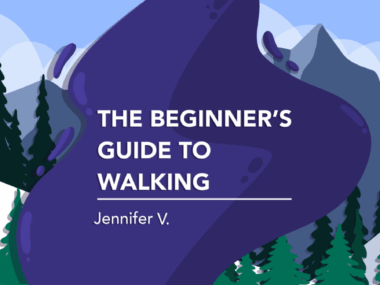With chronic illness, surviving the holidays means letting go of perfect
Sometimes it's OK to choose convenience over tradition
Written by |

Wouldn’t it be nice to glide into the holiday season with everything checked off your to-do list? Every year, I set out with the best intentions to start my Christmas shopping early, write heartfelt holiday cards, and take care of mundane details like ordering a turkey from my local butcher shop — all before the chaos of December sets in.
And yet, every year, I find myself in a whirlwind of panic with just two weeks to go, banking on express shipping to deliver the one gift my daughter has her heart set on. Late-night online shopping has become my version of Santa’s sleigh, but unlike jolly old Saint Nick, I don’t have magical reindeer to help.
It’s not that I don’t love Christmas; I do. But my body, riddled with neuromyelitis optica spectrum disorder (NMOSD), has other plans. In many ways, I’m living with the “body that stole Christmas.”
No army of elves
Maybe it’s the stress of trying to make the season special, or the Canadian cold that hits like a freight train, but come November, my NMOSD symptoms tend to flare up. My body feels like the Tin Man in need of oil. My muscles ache, pins and needles take over my extremities, and fatigue drapes over me like a heavy blanket.
Still, the holiday to-do list looms: budgeting for the holidays on a fixed income; scheduling time to see friends and family scattered across the province, which entails long car rides; hauling up bins of decorations from the basement; wrestling with the tree; and wrapping presents, a task that serves as a constant reminder of the dexterity I’ve lost to NMOSD.
If only I had an army of elves to help me with even the simplest tasks, like wrapping gifts. It’s an art form knowing how to peel off tiny pieces of tape while holding down four corners of wrapping paper, a feat I now find impossible thanks to NMOSD. And before you even suggest it, no, gift bags are not an option for every gift because they just don’t hit the same way as watching someone tear through paper.
In many ways, Christmas is a lot like living with an invisible disability. There’s the magic that we want to believe, and then there’s the reality that is tough to talk about. I try to tackle this “magic” a little at a time. Sundays become my holiday prep days, as I pick up stocking stuffers, call friends to coordinate get-togethers, and bring up a bin or two of decorations. But NMOSD doesn’t follow schedules. Fatigue kicks in and pain flares behind my eyes or in my back, and suddenly, the day is gone.
The truth is that the holiday season looks different for those of us living with a disability. It’s exhausting and often frustrating. Sometimes it feels like the magic of Christmas is reserved for those who don’t have to battle their own bodies every day.
But here’s what I’ve learned: It’s OK to let go of perfection. Some years, the lights on the tree don’t twinkle as brightly. Sometimes I choose convenience over tradition, leaning on gift cards or premade treats. And some years, I accept help, whether it’s asking a friend to wrap gifts or letting someone else host dinner.
The magic of the holidays doesn’t come from perfectly wrapped gifts or elaborate meals. It comes from the laughter around the table, the sparkle in my daughter’s eyes, and the quiet moments when I let myself simply be. To me, Christmas is about gratitude for those who made sure I’m here for another season, and those whom I get to share it with.
For those of us navigating the holidays with chronic illnesses, joy may take a little more work. But it’s there, even in the messiness and imperfection. And that, I’ve learned, is the best gift of the season.
Note: Neuromyelitis News is strictly a news and information website about the disease. It does not provide medical advice, diagnosis, or treatment. This content is not intended to be a substitute for professional medical advice, diagnosis, or treatment. Always seek the advice of your physician or other qualified health providers with any questions you may have regarding a medical condition. Never disregard professional medical advice or delay in seeking it because of something you have read on this website. The opinions expressed in this column are not those of Neuromyelitis News or its parent company, Bionews, and are intended to spark discussion about issues pertaining to neuromyelitis optica spectrum disorder.






Leave a comment
Fill in the required fields to post. Your email address will not be published.